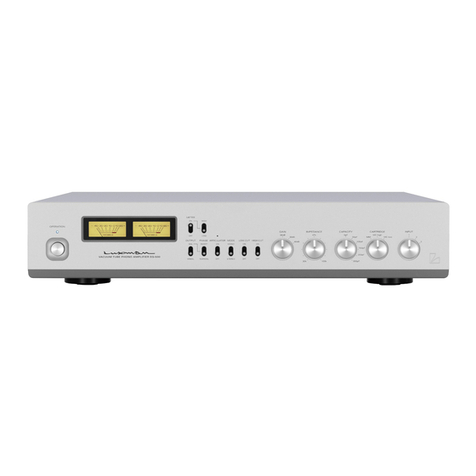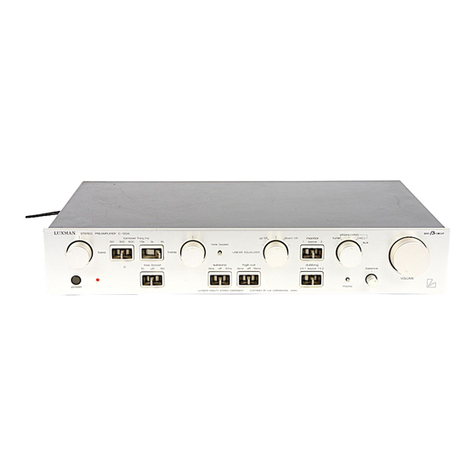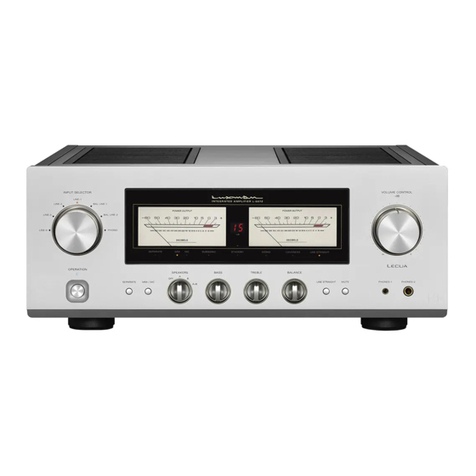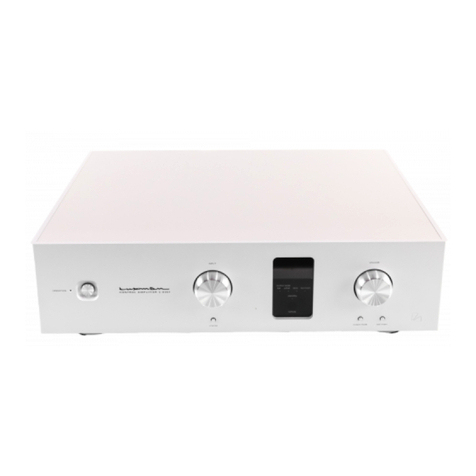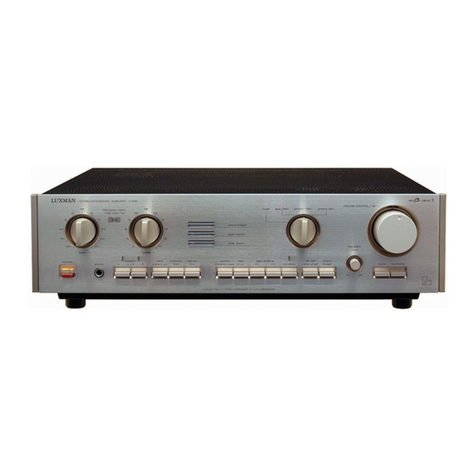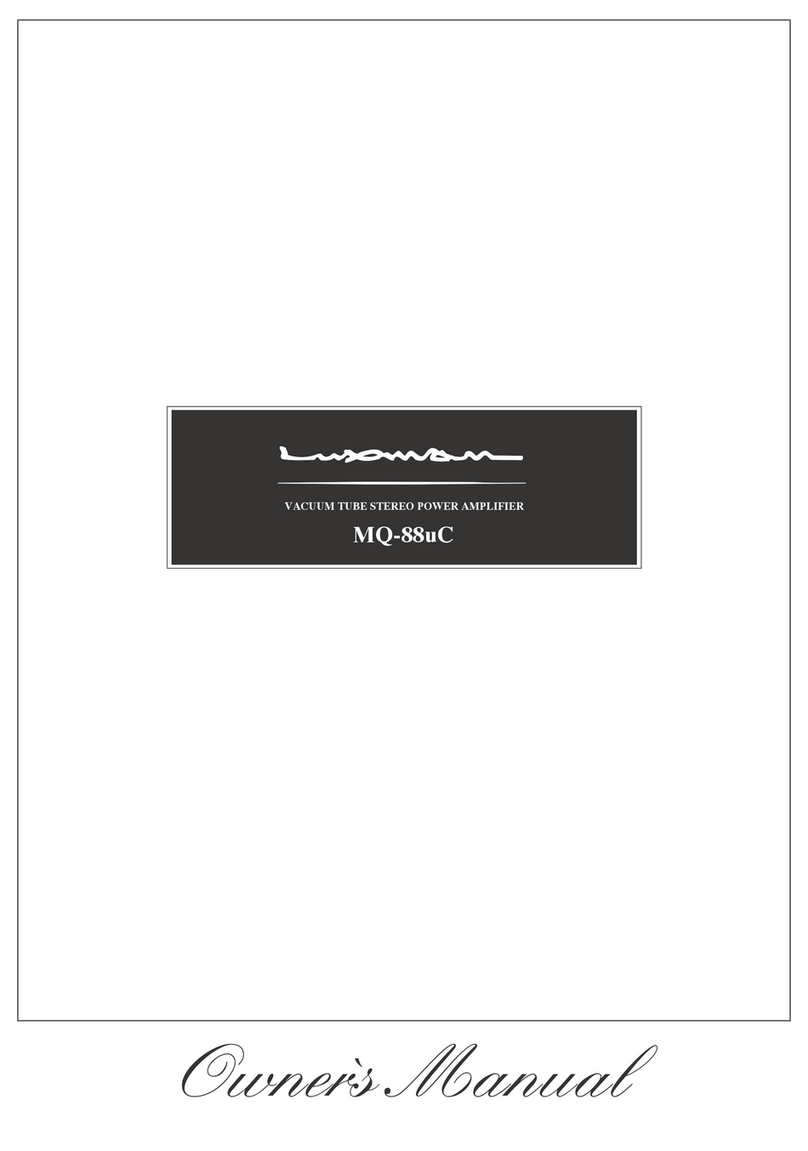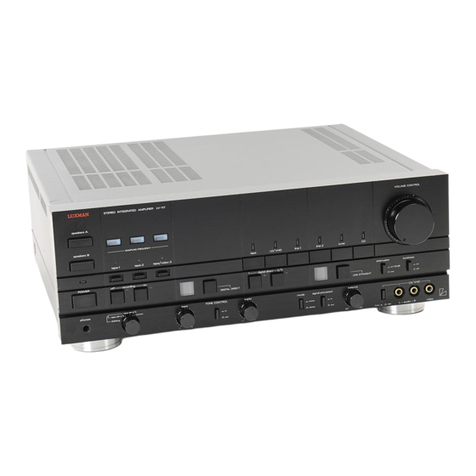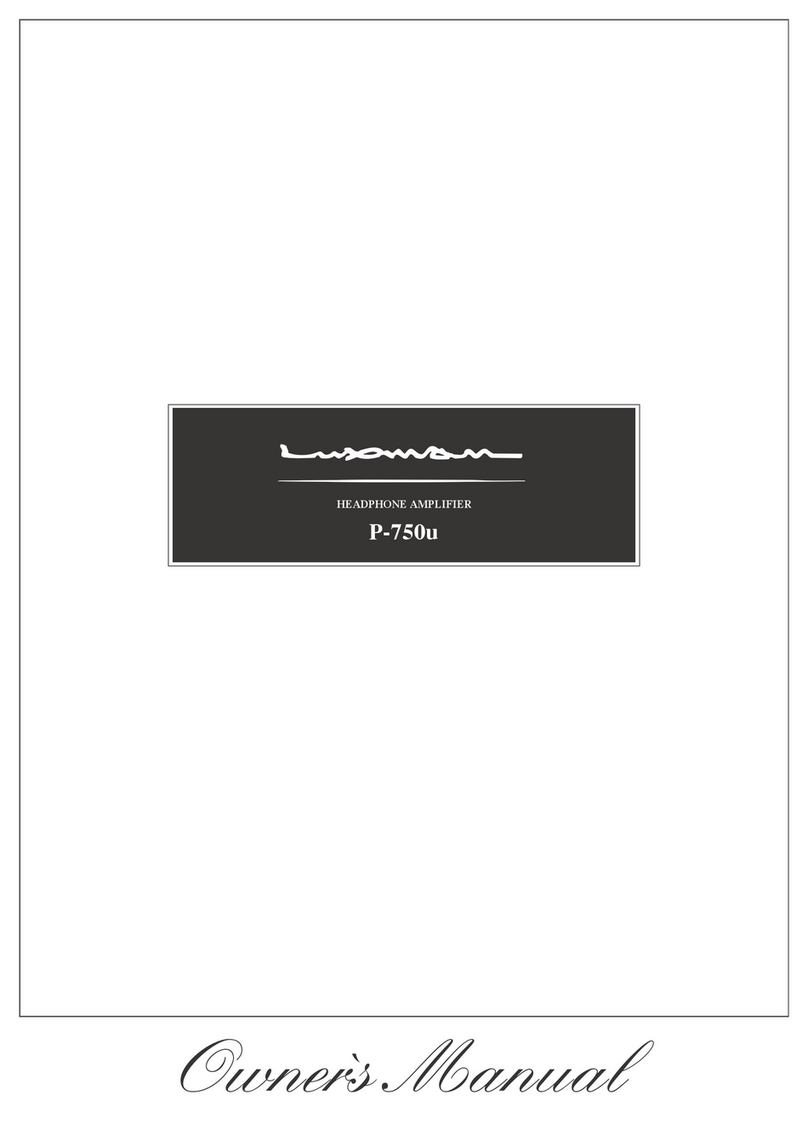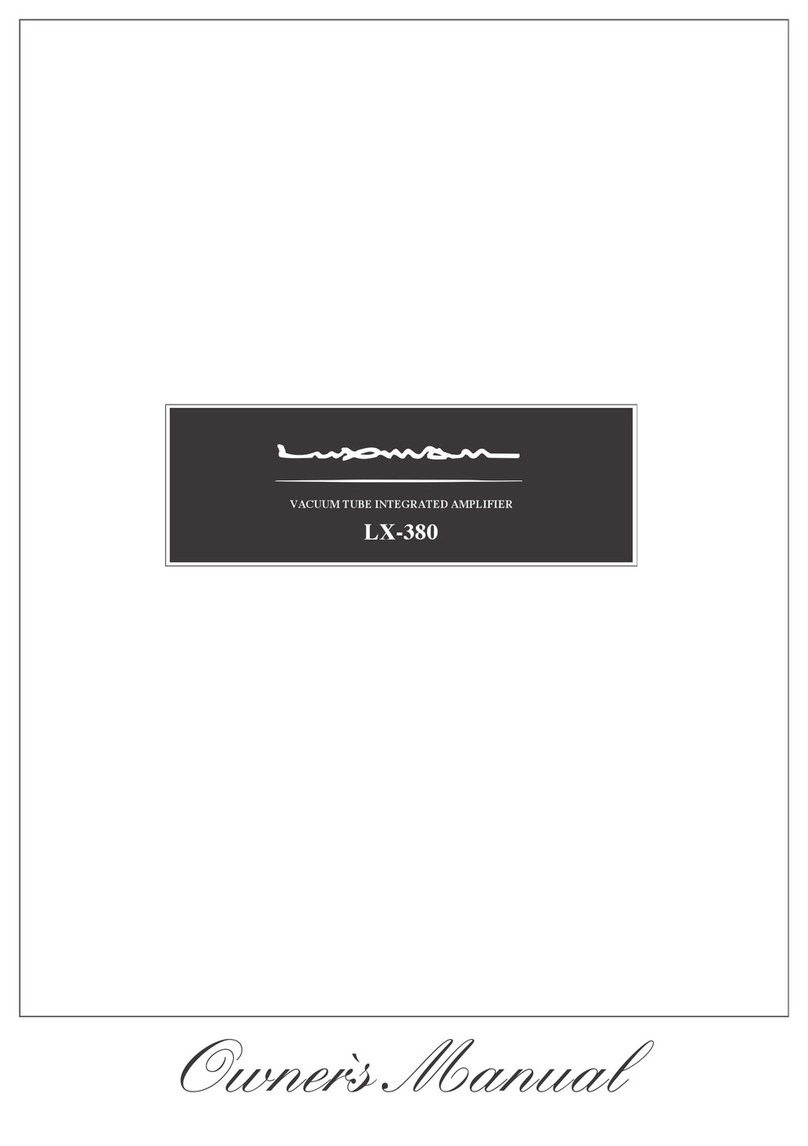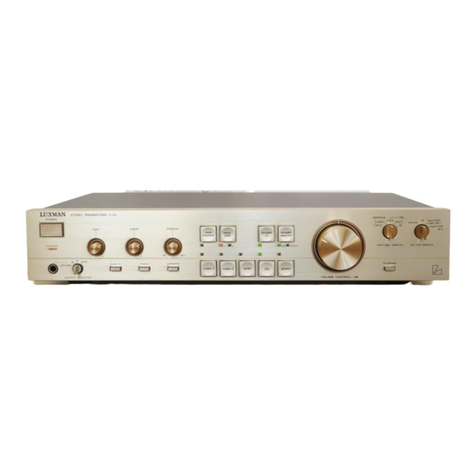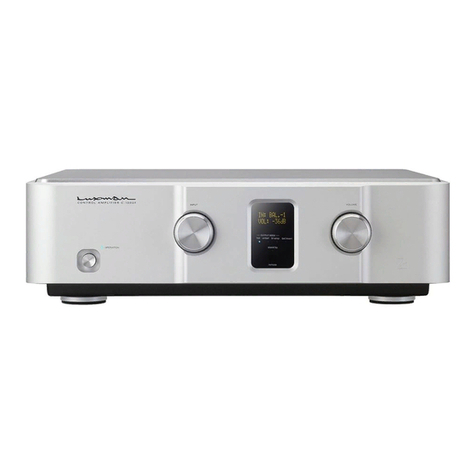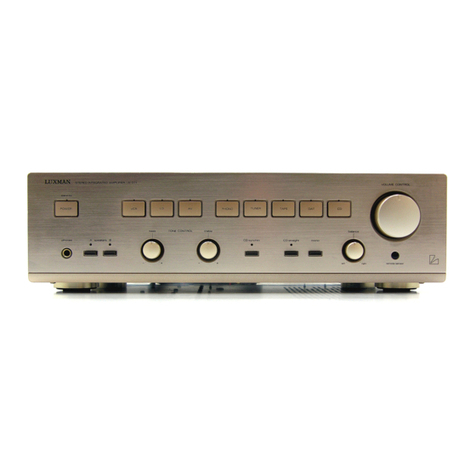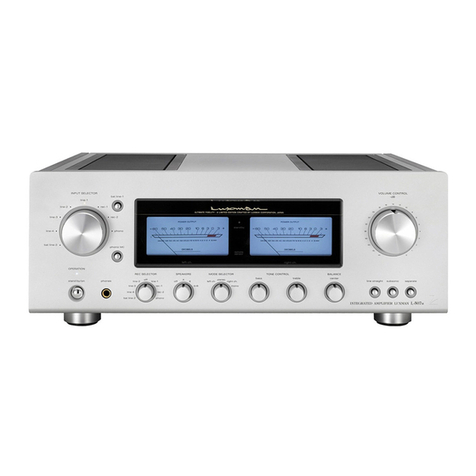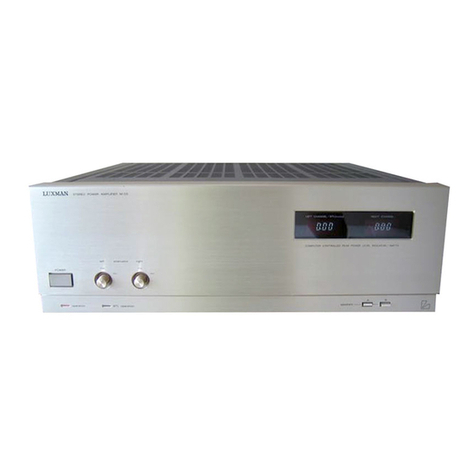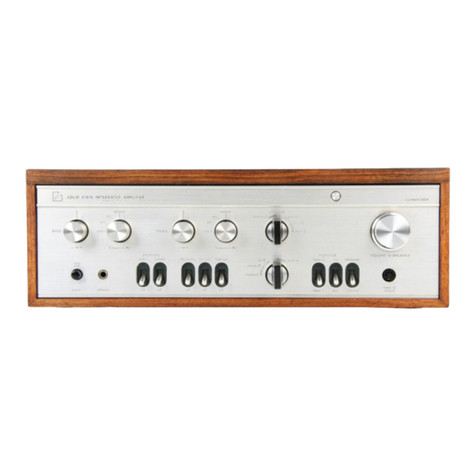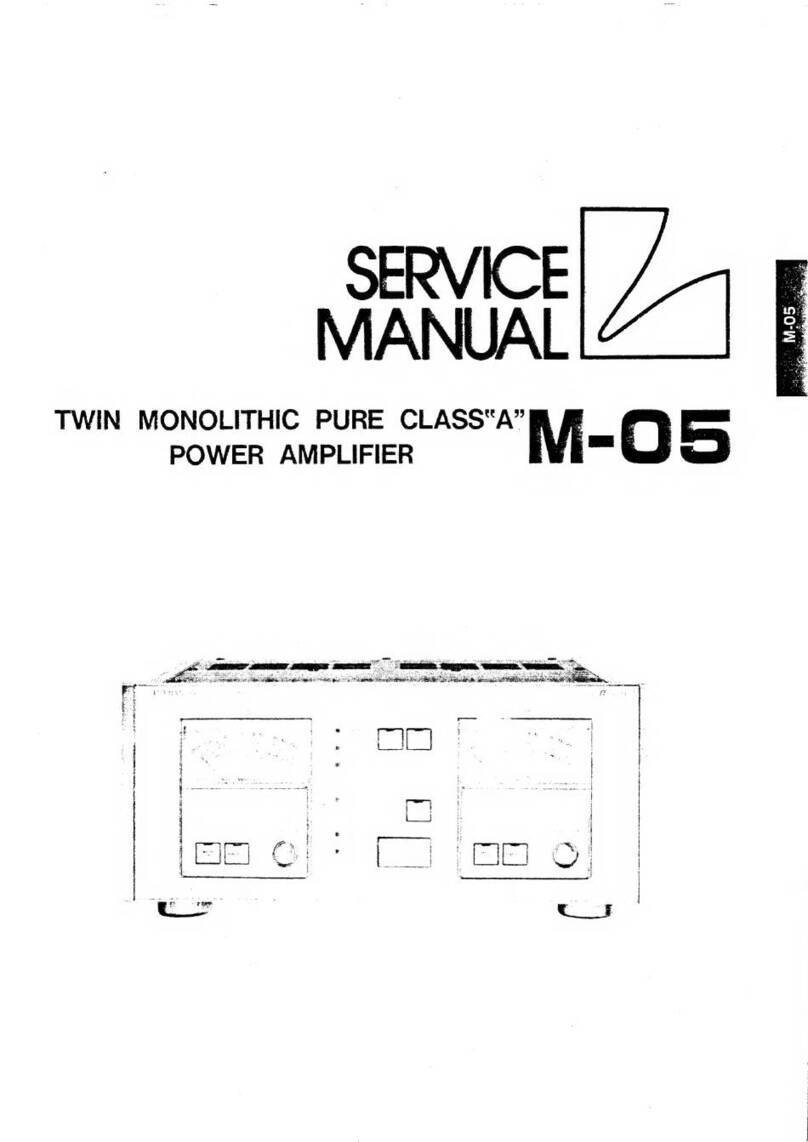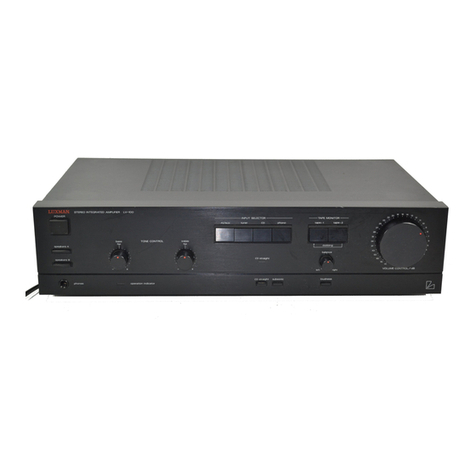
1
INTEGRATED AMPLIFIER L-507uX
MARKⅡ
Precautions
Installation place
This unit shall be installed in a well-ventilated and effectively
heat-released place.
Especially, installation of this unit where direct sunlight is
present, where the temperature rises excessively high such
as close to a heater, or where it is humid or dusty may cause
a malfunction even if heat is efficiently released. Therefore, do
not install this unit in such places.
Ventilation holes
The ventilation holes on the top and bottom boards of this
product must not be blocked. If the amplifier is installed on a
rack or the like, secure ample space for cooling and leave the
door open. Do not pile up other things on the amplifier and
never put articles on it. Failure to observe this may cause a
malfunction.
Note:
For heat dispersal, do not install this equipment in a confined
space such as a book case or similar unit.
* Note
Wall
* *
*
Precautions in connecting with other
components
When connecting this unit to input devices such as a CD play-
er, an SACD player, a D/A converter, a tuner, and a recorder,
be sure to turn off the power of this unit and all other con-
nected devices. Failure to observe this may generate a strong
noise resulting in speaker damage or cause a malfunction.
The pin-plug to be inserted in each input terminal of this unit
shall be pushed in firmly. If the grounding terminal is inade-
quately connected, noises including hum may be generated,
resulting in an adverse S/N ratio.
Batteries
Warning: Batteries used for the remote control shall not be
exposed to excessive heat such as sunshine, fire or the like.
Cautions in connecting speakers
When making speaker system connections, exercise extra
care not to short-circuit between !and @of the speaker
terminals and speaker input terminals of this unit.
If a large signal is applied to the amplifier with its circuit left
short-circuited, a large current may be passed through the
output circuit and cause a malfunction.
The sound is not generated shortly after
the power supply is turned on.
This amplifier is equipped with a time muting circuit in order
to separate the output circuit. Therefore, no sound will be
generated shortly after the power supply is turned on.
If the volume control is set to a high sound level before the
time muting circuit is canceled, a large sound is suddenly
generated. Please be advised that the volume control shall be
set to a low level at first and adjusted after the sound comes
out of the speakers.
Protection circuit
This product is equipped with a protection circuit that is ac-
tivated upon detection of overcurrent, abnormally high tem-
perature, and DC drift to protect the amplifier and speakers.
When the protection circuit is activated, the output to the
speaker terminal is shut off and the standby indicator blinks
to show that this unit is in the muting state. If the protection
circuit is frequently activated even when disconnecting the
AC plug from the wall outlet, waiting for a certain time, con-
necting the plug to the wall outlet again, and turning on the
power again, please consult your dealer.
Repair and adjustment
When repairs or adjustments are needed, please ask the
dealer where you bought the unit.
Cleaning
For cleaning, use a piece of soft cloth to wipe the unit such as
cleaning cloth. When the dirt is hard to remove, use a small
amount of neutral detergent to wipe, and then wipe the unit
with dry cloth. Do not use a solvent like benzine or thinner
because such a substance can damage the exterior.
Safety caution
Caution
This unit is heavy. Be careful when unpacking, carrying, and
installation.
If those work are done by yourself, injury may be caused.
